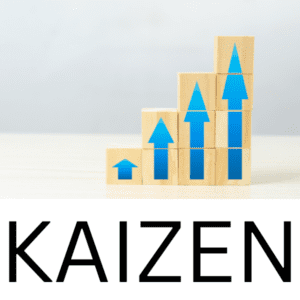
Contents
ToggleIntroduction
In the fast-paced and ever-evolving landscape of modern business, effective leadership requires more than just top-down directives and departmental silos. To navigate the complexities of today’s interconnected world, leaders must adopt a mindset rooted in systems thinking—a holistic approach that recognizes the interdependence and interconnectedness of various parts within an organization. In contrast, silo thinking perpetuates isolated, department-centric mentalities that hinder collaboration, innovation, and overall organizational success.
Understanding Silo Thinking
Silo thinking is a common phenomenon in many businesses, where departments operate independently with minimal interaction or collaboration with other parts of the organization. This mindset compartmentalizes information, resources, and goals within specific departments, leading to a lack of transparency, communication barriers, and inefficiencies. Silos can manifest in various forms, including:
- Communication Breakdowns: Siloed departments often communicate only within their respective boundaries, leading to misunderstandings, duplication of efforts, and missed opportunities for synergy.
- Lack of Alignment: Departments may pursue their objectives without considering the broader organizational goals, resulting in conflicting priorities and wasted resources.
- Resistance to Change: Siloed structures can breed resistance to change, as individuals become accustomed to operating within their own comfort zones and resist efforts to collaborate or adapt to new approaches.
Embracing Systems Thinking
In contrast to silo thinking, systems thinking encourages leaders to view their organization as a complex, interconnected system where every component influences and is influenced by others. Here are key aspects of systems thinking that leaders should embrace:
- Holistic Perspective: Systems thinking encourages leaders to consider the bigger picture, understanding how different parts of the organization interact and impact each other. By taking a holistic view, leaders can identify leverage points and develop strategies that optimize the entire system rather than individual parts.
- Interdisciplinary Collaboration: Instead of operating in isolation, systems thinking promotes interdisciplinary collaboration, where individuals from different departments work together to solve complex problems and achieve common goals. This cross-functional approach fosters innovation, creativity, and a diversity of perspectives.
- Feedback Loops: Systems thinking emphasizes the importance of feedback loops, where information flows freely within the organization, enabling continuous learning and adaptation. By soliciting feedback from stakeholders across the organization, leaders can make informed decisions and drive meaningful change.
- Adaptive Leadership: In a complex and dynamic environment, leaders must be adaptable and responsive to change. Systems thinking encourages adaptive leadership, where leaders anticipate and navigate uncertainties, leverage emerging opportunities, and guide their organizations towards resilience and sustainability.
Bridging the Gap: Cultivating a Systems Thinking Culture
Transforming from silo thinking to systems thinking requires more than just a shift in mindset; it necessitates a cultural transformation within the organization. Here are some strategies for cultivating a systems thinking culture:
- Leadership Role Modeling: Leaders must lead by example, demonstrating a commitment to collaboration, transparency, and systems thinking in their actions and decision-making processes.
- Cross-Functional Training: Provide opportunities for employees to develop a broader understanding of the organization’s operations and how their roles fit into the larger system. Cross-functional training programs can help break down silos and foster a culture of collaboration and mutual understanding.
- Clear Communication Channels: Establish clear communication channels that facilitate the flow of information across departments and hierarchical levels. Encourage open dialogue, active listening, and knowledge sharing to promote transparency and alignment.
- Incentivize Collaboration: Recognize and reward collaboration and teamwork, incentivizing behaviors that contribute to the organization’s collective success rather than individual achievements.
- Continuous Improvement: Foster a culture of continuous improvement, where employees are encouraged to identify inefficiencies, experiment with new approaches, and learn from both successes and failures.
READ MORE.

Conclusion
In today’s interconnected and rapidly changing business landscape, leaders must transcend the limitations of silo thinking and embrace the principles of systems thinking. By adopting a holistic perspective, fostering interdisciplinary collaboration, and cultivating a culture of continuous learning and adaptation, leaders can drive innovation, resilience, and long-term success for their organizations. Breaking down silos and embracing systems thinking isn’t just a leadership strategy—it’s a fundamental shift in mindset that empowers organizations to thrive in an increasingly complex and interconnected world.
So, my question is, are you leading from a Silo Mindset or a Systems Mindset? Let me know Below!
Matt Styles
Matt Styles is the founder and voice of The Stylish Leader enterprise. Empowering the next generation of leaders, Matt is focused on challenging minds, inspiring hearts, and helping others achieve their highest potential for success.
Read More.

- By: Matt Styles
- Date: July 18, 2024
Kaizen: How To Supercharge Your Success
- 3 min read
- 0 comment

- By: Matt Styles
- Date: July 15, 2024
Lean Culture 101: How To Organize A Framework That Thrives
- 7 min read
- 0 comment

- By: Matt Styles
- Date: July 15, 2024
Emotional Intelligence: How To Revolutionize Your Leadership Potential
- 8 min read
- 0 comment


